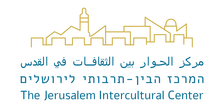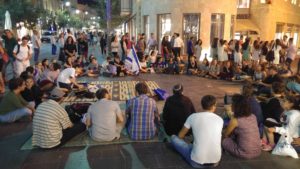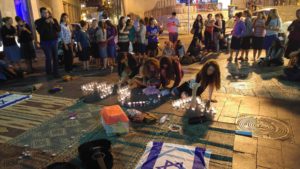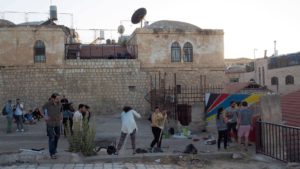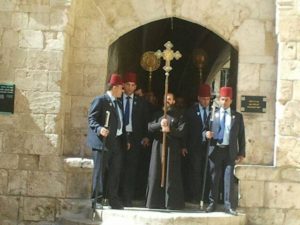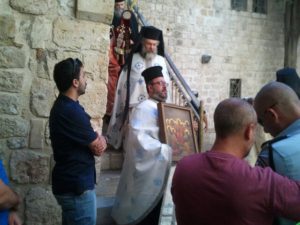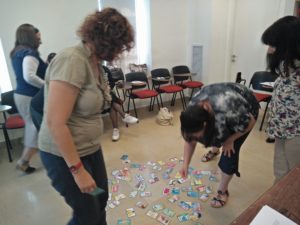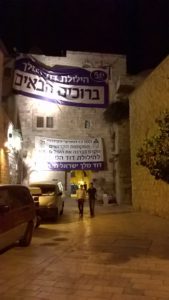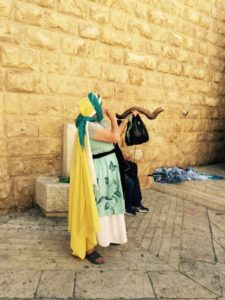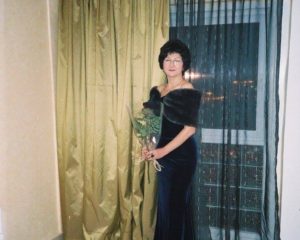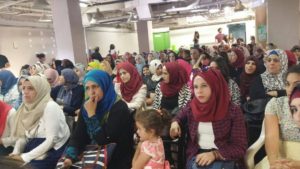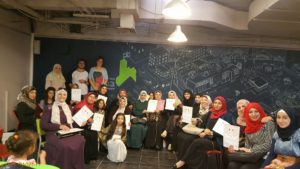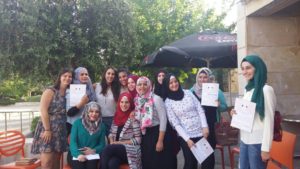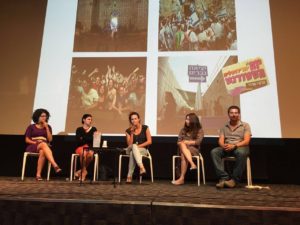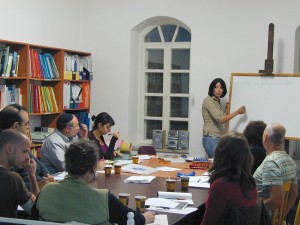Mourning Respectfully in Zion Square, Together
Two years ago, in light of the murder of the three Jewish boys and subsequent murder of an Arab boy, a group of diverse activists came to Zion Square to light memorial candles and to mourn. What they found was a downtown full of hate, racism and violence. But they didn’t give up and the Speaking in the Square initiative was born. The JICC became their mentors, provided logistical support and helped them develop. They also became one of the cornerstone initiatives – alongside our Neighborhood Tolerance Network and 0202, to name a few – of our Grassroots Campaign to Promote Tolerance in Jerusalem. With the assistance of the UJA-Federation of New York and the Jerusalem Foundation, the Campaign seeks to empower grassroots activists and their initiatives to fight racism and xenophobia throughout Jerusalem.
Unfortunately, on Thursday, June 30, a young Jewish girl was murdered in her bed. This time, however, things were different in Zion Square.
Our Director, Dr. Hagai Agmon-Snir, wrote this Facebook post about his experiences this past Thursday night, and sums up the past two years:
Exactly two years ago, even though they didn’t know it yet, a group of Jerusalem young people invented Speaking in the Square. They came to Zion Square on that awful night, right after the funeral of the three boys, to light memorial candles and to sing quiet and comforting songs, and to balance out those who sought revenge and wanted to hurt the Arabs who worked and walked through downtown west Jerusalem. Even though members of the Speaking in the Square core have both left and right wing political views, the fact that they wanted only to sing songs and be sad tagged them among many in Zion Square as ‘leftist traitors,’ and they were kicked, spat upon, and shouted at as they sat on the pavement at Zion Square. They came back the next evening, and every evening during Operation Protective Edge, despite the violence and hate. I wasn’t part of it then, but later I used the term ‘courageous activism‘ to describe their approach, and it became a part of my professional lexicon. It turns out that in order to effect social change, you need to learn not to run away when they curse at you, throw sunflower seed shells at you or even kick you. Those who thought that these university students would disappear from Zion Square with the threats discovered that it didn’t happen. And in time, the violence decreased significantly.
A month afterward, at about the middle of August 2014, the Effective Dialogue approach was born. It was invented by these young people in Zion Square. Instead of hurling insults at Lehava activists and others who expressed racist views, this approach encourages one to talk with them in a way that enables expression of complex thoughts and ideas, helping us to understand that reality isn’t black and white. The goals of the group were then defined. The goal isn’t to turn Lehava activists into Meretz activists (especially since about half of the Speaking in the Square initiative support the Jewish Home party), but to detach the political discussion from expressions of hate, violence, racism and incitement that are too common in Israel’s political discourse. And to understand that deep discussion enables more sophisticated solutions than slogans such as “Wipe out Gaza” or “End the Occupation.”
Speaking in the Square continues every Thursday night, and sometimes on Saturday nights as well. A routine has been created that has re-branded Zion Square and downtown Jerusalem as a place where dialogue is possible. Suddenly it was possible to sit on the floor on mats and talk….Zion Square also received special treatment from City Council members such as Elad Malka, Laura Wharton, and Tamir Nir, who gave a hand so that the police and the Municipality could be a part of the change there. It was not a coincidence that the evenings in memory of Shira Banky took place there, even though she wasn’t murdered in Zion Square, and that the weekly events of the Yerushalmim Movement and others take place there.
In October 2015, almost 1 1/2 years after the process began, there were demonstrations of angry mobs in Zion Square on the heels of the murder of the Henkin family in Samaria. An hour before that demonstration, more people were murdered in the Old City, and the atmosphere could be cut with a knife. Speaking in the Square sat in Zion Square. Thana Jawabreh, who had just returned from a television interview where she emphasized as a Palestinian Muslim her objection to these murders, sat with them. The activists sat in circles, lit memorial candles and expressed their pain. There were those who participated in the angry mob demonstration, filled with rage, and calmed down and sometimes even sat with us. There were others for whom it was difficult to be in a circle that didn’t call for revenge. The Border Police failed to act appropriately and in time, and the event to spiral out of control. But courageous activism is courageous activism, and the group stayed on the floor and sang, even when the atmosphere was difficult around us. The message was heard well – our approach, which encourages tolerance and opposes hate – will not be driven out of Zion Square.
And yesterday, a 13-year old girl was murdered in Kiryat Arba. And another angry mob demonstration was planned in Zion Square. And we came – just beforehand to light memorial candles and to sit in a circle and sing quiet songs. And then, the surprise. We found some Jewish religious girls, students in an Ulpana, from an organization called Or Eitan who got there before us. Members of this young organization, Adi from Mitzpe Jericho and her friends, with the help of Elchanan from Har Homa and others, tried to light candles and do exactly what we wanted to do. When they weren’t successful, we volunteered our candles, which also wouldn’t light….and then we came together. And then more and more arrived, especially teenage girls, especially teenage Jewish religious girls, and joined in on the efforts to light candles and sing, from 8:30 at night to midnight. The Yerushalmim Movement arrived and discovered that their set corner was taken, and then they, too, joined the circle. Once in awhile someone came along and shouted at the religious girls that they’re sitting with ‘leftist traitors,’ that they’re not OK and that they’re not shouting “Jewish blood will not be un-claimed.” (as if any one of the “leftist traitors” wouldn’t care about anyone’s blood…) The girls calmed them down as best they could and explained that they’re just doing what needs to be done, and that it needs to be done with everyone. From afar we occasionally heard the Lehava boys, not more than 20 – 30, shouting racist epithets, but they were no more than a curious anecdote in the Square – most of what was happening last night is what you see in the pictures here. And in the background, close to the circle, were the taxis of Zion Square, Arab drivers who told me afterward that from their standpoint they felt completely safe all night (as opposed to the summer of 2014, when they were being attacked frequently).
At midnight we closed the circle, and some of us from Speaking in the Square found ourselves talking with Adi, Tamar and some other teenagers from the settlements, trying to examine the differences between us vis-a-vis the Arabs. And it was excellent to discover that there are gaps, yet we also have things to talk about. Because where else can these girls find people like us to talk to except for Zion Square? And where, except for Zion Square in the middle of the night, can we hear the frustration of girls who feel threatened by countless rock throwers and other acts and need to deal with the the hate these actions trigger, in their local environments and sometimes among themselves?
Hallel, a charming girl and gifted dancer, was murdered yesterday. I hope that someplace she sees what happened last night in the Square in her honor. Reality changes in the Square from day to day and from hour to hour. This change could be felt this year in the Square and in many other places in the city on Jerusalem Day, when we and tens of thousands of Jerusalemites re-claimed Jerusalem Day as A Different Day in Jerusalem. Maybe in the future, with the help of Or Eitan, Speaking in the Square and other groups of young people of another breed, from another generation, the change will also come to Tel Aviv and the Samaria.
Shabbat Shalom!
And here’s the post itself, in Hebrew:
